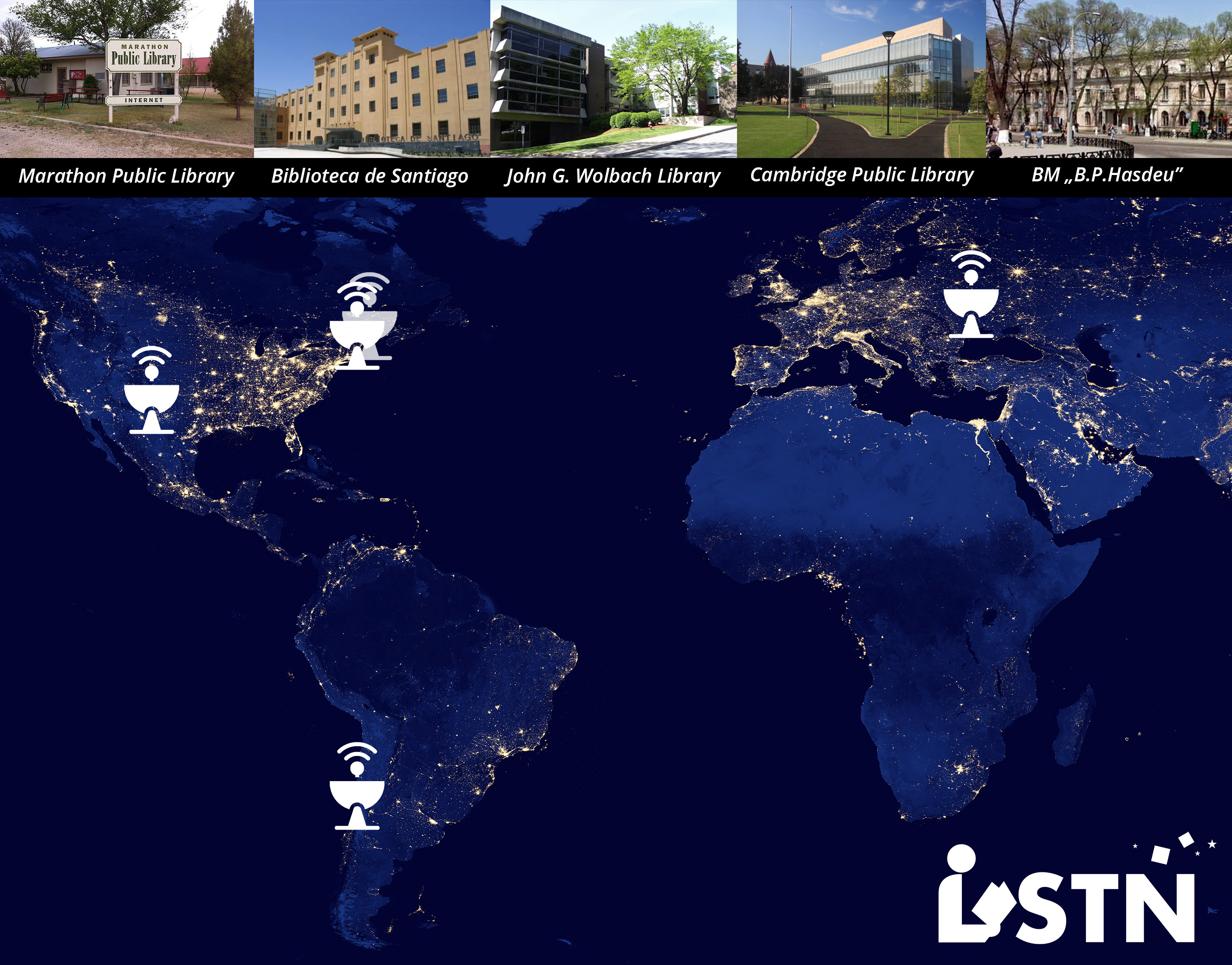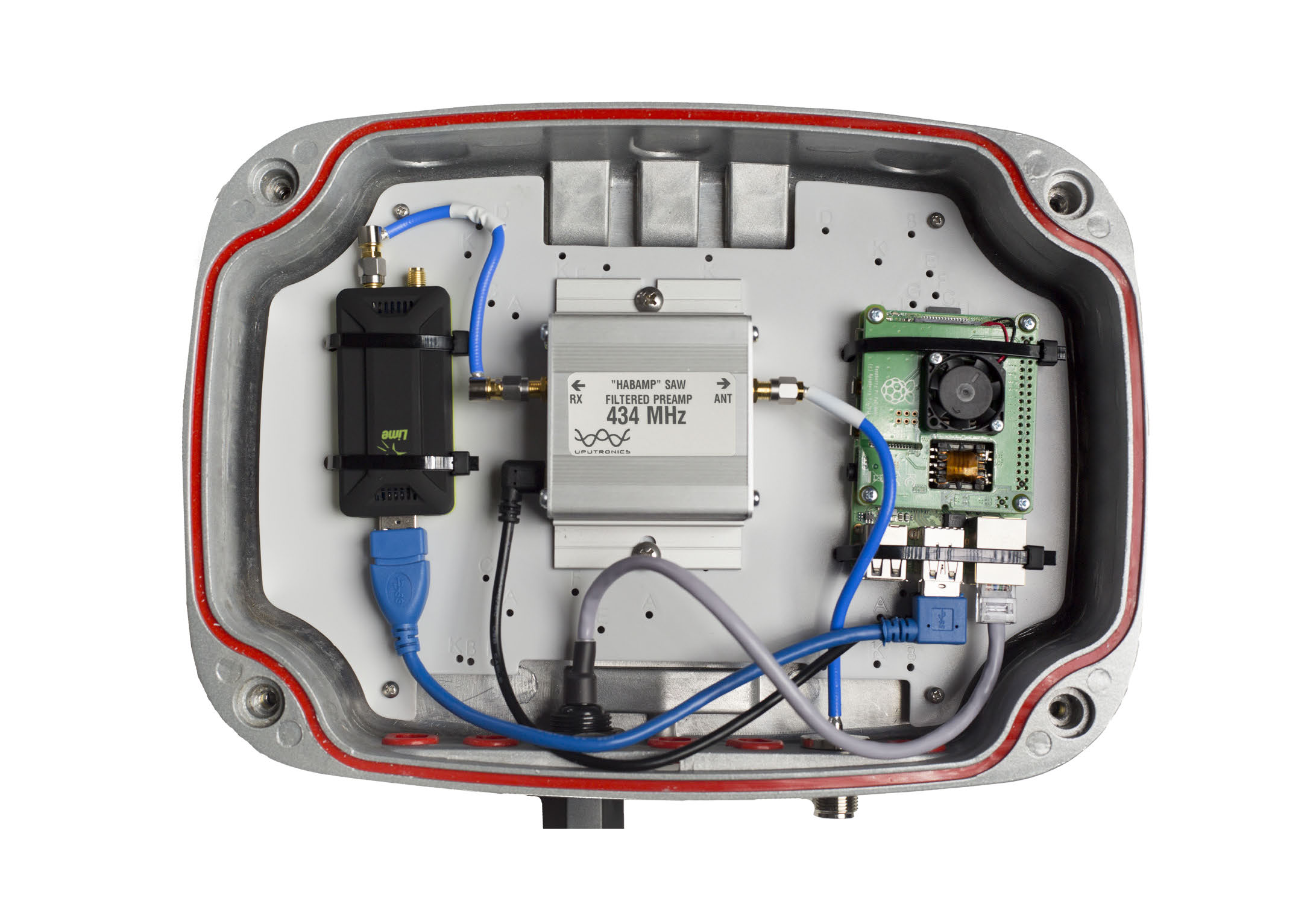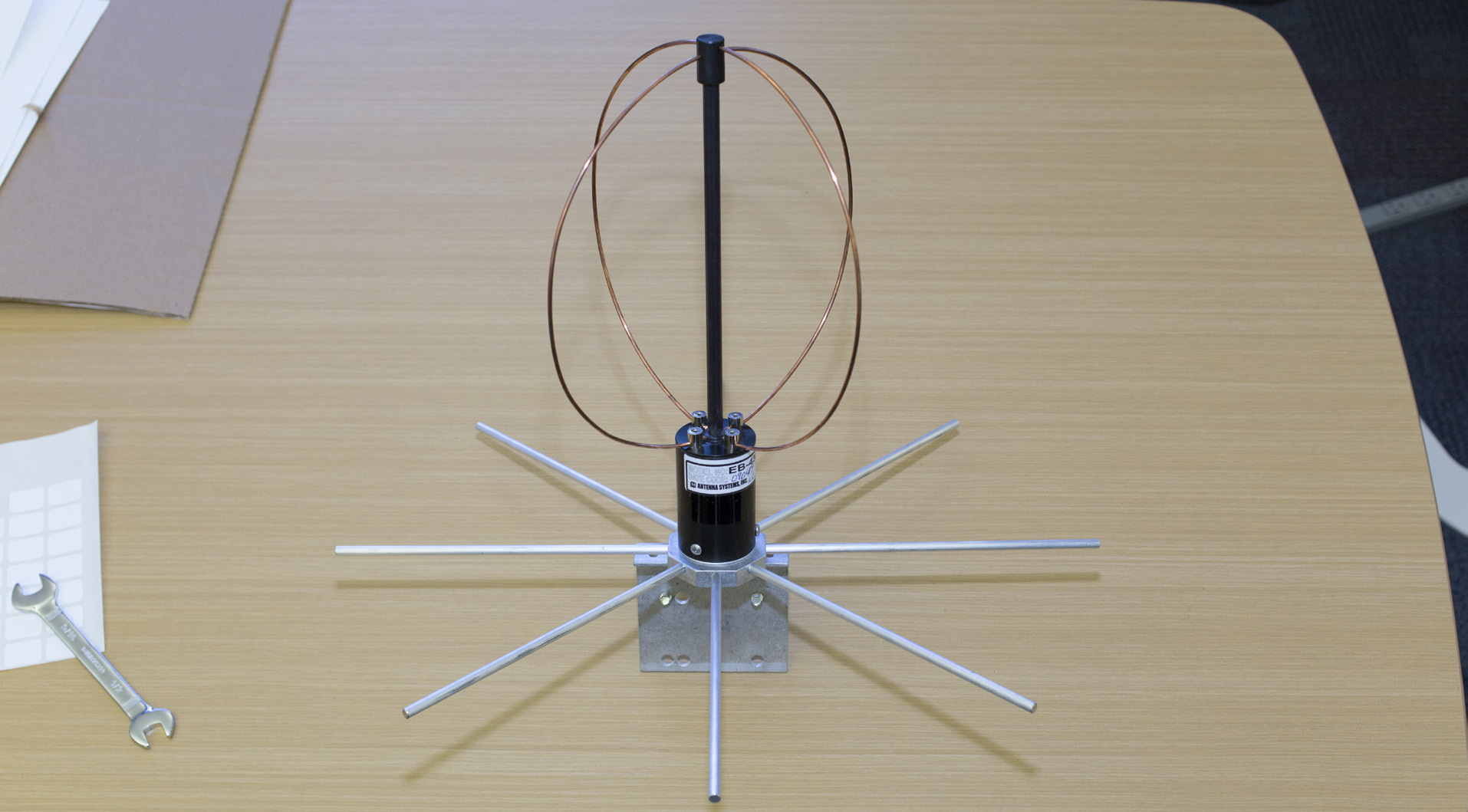Authors: Kirsty Wallis, Thomas Kaarsted, Simon Worthington, Alisa Martek and Dragana Janković.
Library Infrastructures and Citizen Science
Section Editor Kirsty Wallis
v1.0, 2023
Series: Citizen Science for Research Libraries — A Guide
DOI: 10.25815/tz0x‑m353
LIBRARY SPACE TECHNOLOGY NETWORK
A pilot infrastructure for libraries to offer easy access for satellite enthusiasts to data from small satellite missions using open technologies and open source software.

By Nico Carver (ORCID iD: 0000-0002-8152-0440), John G. Wolbach Library, Harvard University.
Article DOI: 10.25815/f360-s580
About LSTN
The John G. Wolbach Library, in collaboration with the Libre Space Foundation (LSF), is piloting an initiative called the Library Space Technology Network (LSTN) to reach satellite novices and engage the public with space-based science (Figure 1). The goal of LSTN is to create novel educational opportunities and hands-on learning experiences with open satellite technology in public libraries. For the past two years, the LSTN team has been developing an affordable satellite ground station kit that public library communities can build, install, and operate. This will allow these public libraries to have the necessary open infrastructure to receive and interpret data from dozens of small satellite missions directly. Small satellite missions rely on ground station networks to track and monitor the health of their satellites. All LSTN ground stations are connected to SatNOGS, a global network of open ground stations.
Society is at a turning point where space technology is at risk of being increasingly closed off as corporations begin selling access to space through their proprietary tools. SatNOGs, conversely, is building an open community dedicated to developing a network of connected ground stations that uses only open technologies and open source software. Their database of satellites, ground stations, and observations (the data received from satellites by ground stations) is built from the ground-up by interested volunteers, and now libraries can get involved too by building, installing, and operating a LSTN kit as in the figure below.

Getting started with LSTN
To get started with LSTN, libraries can purchase the necessary parts for the LSTN kit off-the-shelf for well under $1,000 USD. On the LSTN website, you can find a detailed list of the parts, as well as their function and location within the kit. Once all parts are received, librarians or community members can use the LSTN Handbook (Bouquin and Frey 2020) for step-by-step instructions to assemble, install, test, and troubleshoot the ground station. The LSTN Handbook was developed over the course of the LSTN pilot as a one-stop resource for working with the LSTN kit, and is available free of charge under a Creative Commons license on Zenodo. The handbook is an evolving reference guide; improvements and additions will be continually added, and updated versions will always be available at: 10.5281/zenodo.3776517.
After a library has secured all the parts and has reviewed the LSTN Handbook, the LSTN team suggests identifying a small group of library users interested in leading a ‘community build’ of the kit. This would allow the library community to see, hold, and understand the technology involved in a satellite ground station before it is installed on the library roof (where it becomes less accessible). After the ground station is installed and operational, a new phase of educational opportunities begins. The LSTN team has begun working on activities like decoding a Morse code message received directly from a satellite passing overhead.
Next steps
Now that the pilot has proven the technical feasibility of building, installing, and operating LSTN kits at public libraries, the next stage of the project is to develop educational activities with the help of libraries and librarians. The core team has begun developing some introductory materials, but are on the lookout for new ideas that will allow library communities to connect what they are learning about satellite communication and satellite data to their lives and existing data skills.
Infobox: What’s in the LSTN kit? |
| Antenna: The antenna picks up radio waves from the satellites and passes them on as electrical current.
Cables: Similar to the cables used for cable television. These cables transmit the signal from the antenna to the radio. Radio: A radio receives radio waves through the antenna and converts them into a usable form. The radio for the LSTN kit is a software-defined radio (SDR). Computer and software: The computer and software controls the whole station, and communicates with the larger SatNOGS network. Low Noise Amplifier (LNA): This is put between the antenna and the radio and amplifies the relatively weak signal from the satellite. Power and internet connection: The computer needs power. The computer also needs to be connected to the internet. Supports: Since ground stations are usually located on rooftops, they need to be safely attached. |
 |
 |
Bibliography
User Type
- Educator/museum
- Researcher/research institution
Resource type
- Case studies
- Digital tools
Research Field
- Physical sciences



